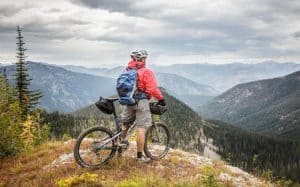
Last week I ran across two studies (a paper and a presentation) that both illustrate what I think it an important point. When we look at what happened in the past (usually from photos, or history books, or what’s there today) and see changes, we don’t know for sure if that is due to (1) previous people doing things (Natives and settlers), or (2) what happened when previous people stopped doing things, (3) vagaries of weather/climate or (4) other causes.
Last week I attended a Colorado State University featuring Dr. Marina Redmond, talking about pinyon-juniper woodlands and their expansion and contraction. The first point that she made is that there is an enormous range, and each situation/place is different. In some areas, PJ is expanding, and in other areas contracting, due to drought-induced mortality. According to this paper the mortality in pinyon is due to Ips species, and in juniper due to “plain old” drought stress.
If you just look at PJ expansion, you might think it’s due to fire suppression, which has changed over time. But it might also be caused by wetter conditions that were good for tree seedling establishment. Or it might even be that there was overgrazing in the past, which established conditions (little grass cover) in which PJs got a chance to take hold. It could even be a combination of several of these factors. Or in more generic terms, climate change (that is change mostly before what we call anthropogenic cc based on GHGS), post-disturbance recovery (I guess these would be “natural” disturbances, but perhaps these may not be obvious 100 years later), and changes due to human interventions (say, removing bison, adding cattle) and recovery from human interventions. Humans have a long history in the Southwest. Then, when you get into interactions among these, it seems like it would be hard to know for sure, and perhaps even harder to find (1) an ideal target NRV that people agree on (2) the FS can afford to intervene to produce and that (3) will be resilient to climate change.
It seems to me that keeping endangered species around (as in the study shown in the image above), producing useful things for wildlife and people (and cows) like forage and pinyon nuts, and at least thinking about resilience to climate change are challenging (and expensive) enough for land managers without introducing ideas like NRV or HRV. Perhaps the above observations in PJ are an example of what Millar and Woolfenden point out as “conceptual and practical” problems with ideas such as NRV.
While there are many important lessons to learn from the past, we believe that we cannot rely on past forest conditions to provide us with blueprints for current and future management (Millar et al 2007). In particular, the nature and scale of past variability in climate and forest conditions, coupled with our imprecise ability to fully reconstruct those conditions, introduce a number of conceptual and practical problems (Millar and Woolfenden 1999a). Detailed reconstructions of historical forest conditions, often dendroecologically based,
are very useful but represent a relatively narrow window of time and tend to coincide with tree recruitment in the generally cooler period referred to as the little ice age (figure 1). As such, manipulation of current forests to resemble past conditions may not produce the desired result when considering future climates.
This quote is from this paper by Stephens, Millar and Collins (2010). I’d only add to that list “the nature and scale of past variability in human actions and our imprecise ability to fully construct” them.





